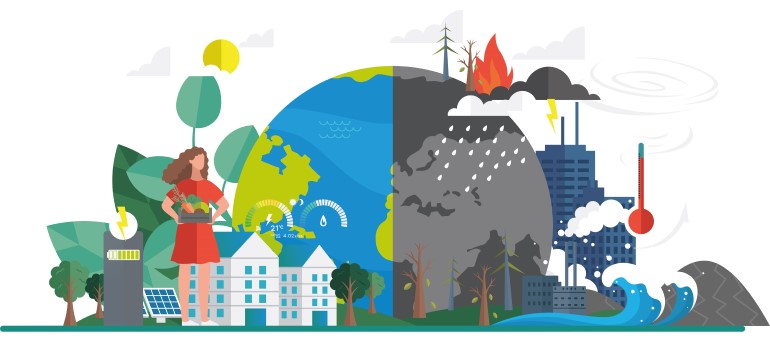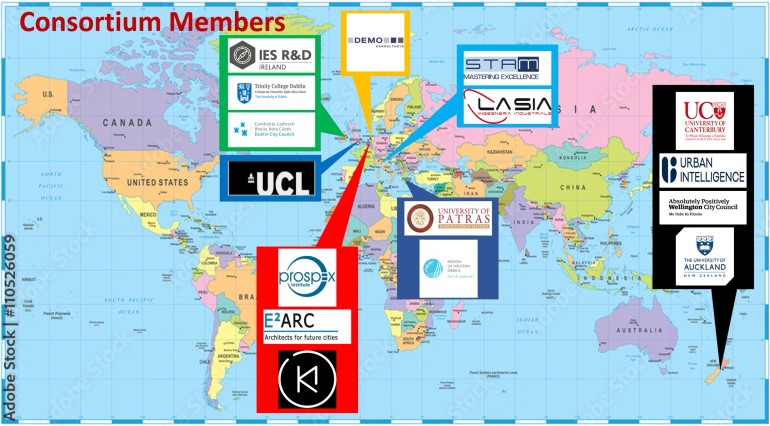The Kiwis building a ‘SimCity’ for resilience planning
As an island nation at the edge of the world, New Zealand is no stranger to natural hazards. But despite our isolation, we are far from alone. Kiwi researchers, participating in a Horizon Europe project, say international collaboration is crucial to disaster mitigation and they’re building tools to aid resilience in cities around the globe.
On this page
Modeling hazards to help reduce impact
Dr Theuns Henning from the University of Auckland describes the three-and-a-half-year project, known as Minority Report, as “trying to build a SimCity for resilience planning”.
“A storm event or a natural disaster is indiscriminate. It hits all the infrastructure – stormwater, roads, buildings – and you get cascading effects. To understand the whole picture and the whole system, you need to see how things will unfold.
“We want to build a better simulation of hazards and how these hazards impact urban infrastructure, then support that with an automated way of identifying potential strategies for adaptation and decision-making,” he adds.
Co-collaborator, Dr Tom Cochrane of the University of Canterbury, who is working on flooding and evacuation modelling for the project agrees:
“The digital tools we create will help city planners and engineers reduce the impacts of flooding, fires, or other disasters in urban areas and help identify the best ways to evacuate people when they occur.”

A visual depiction of hazards affecting urban environments.
An international outlook
The University of Auckland and the University of Canterbury, along with private company Urban Intelligence and the Wellington City Council, make up New Zealand’s contribution to the international consortium. This includes partners from Ireland, Italy, Greece, Belgium, the Netherlands and the UK.
Research focuses on three sites: Dublin in Ireland, Patras in Greece and Wellington in New Zealand. Both Theuns and Tom are enthusiastic about the opportunities this brings.
“In New Zealand, we have incredible strength when it comes to understanding the risk of natural hazards. This came through in the work from the Resilience to Nature’s Challenges and the Deep South National Science Challenge,” Theuns says.
“The area that we're not so strong in – apart from when it comes to seismic risk – is the resilient design of infrastructure. This project will allow us to connect a very dynamic risk assessment process with the planning and engineering solutions side of things.”
For Tom, benefits of working in an international team include access to a “wider knowledge base with different experiences, new ideas and a wide set of example applications”.
The project also provides an opportunity build knowledge of hazards that aren’t as prevalent in New Zealand.
“There is a fire risk in some parts of New Zealand, but this is minor when compared to the high fire risk experienced in Greece,” Theuns says.
“Through this project, we’re able to gain some new knowledge such as how we could make our building designs more fireproof for example.”
Top tips for fellow researchers
Both Theuns and Tom advocate putting yourself out there, making connections and maximising your chances by finding a European partner with a track record of success.
“New Zealand’s association to Horizon Europe has made it possible to focus on this work. Without this funding opportunity we would struggle to do this work locally. It’s exciting for us and for New Zealand,” Tom says.
“We are well-regarded internationally, and rightfully so,” Theuns adds. “But it's with these sorts of initiatives that we step up to the world stage and to the major league.
“I strongly encourage New Zealand researchers to collaborate more internationally. It’s a matter of taking part, giving it a go, and seeing where you land,” he says.

Minority Report project partners.
List of project partners
Find out more
The Minority Report project has received funding from the European Union’s Horizon Innovation Action programme under grant agreement No 101147385.
Minority Report project fact sheet(external link) – cordis.europa.eu(external link)
For more on New Zealand’s association to Horizon Europe, including the MBIE top-up funding scheme and National Contact Points, see the MBIE website

